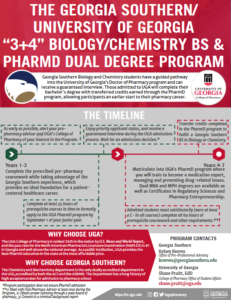Good news for the ugly, sumo wrestling fingers, learning from Swedish twins, and more
18 Dec 2021
Posted by Andrew Kantor
Opioid settlement on hold
Like Rasputin or “The Big Bang Theory,” the Big Opioid Settlement just will not die.
It was finally over (we thought) when thousands of state, local, and tribal governments agreed, reluctantly, to give the Sackler family, owners of Purdue Pharma, immunity from liability in any future civil cases related to opioids.
But no. Now a U.S. District Court judge has said, Nope, ‘the bankruptcy code does not explicitly permit a judge to grant such releases.’
What also didn’t help:
…the more than $10 billion that the Sacklers withdrew from Purdue between 2008 and 2018, as the opioid epidemic was cresting. The Sackler dividends were largely deposited in offshore accounts and trusts that are inaccessible to American authorities.
Covid quickies
ICYMI: A CDC committee recommends recommending either mRNA vaccine over Johnson & Johnson’s.
“I just have a real problem with a recommendation for anyone to get a vaccine that one per 100,000 women ages 30 to 49 years old will have a condition with a case fatality rate of 15%.”
The next Covid treatment could come from … sharks. It seems proteins from their immune systems can prevent coronaviruses from infecting cells. No use right now, but it “could be used down the road for future SARS outbreaks. It’s a kind of insurance against the future.”
Another UGA fast track program
This one is with Georgia Southern University. GSU chem and bio majors will have “a guided pathway into UGA’s four-year pharmacy curriculum.” If they meet UGA College of Pharmacy requirements as juniors, they’ll get priority applications, a guaranteed admission interview, and — if accepted — can transfer their credits and complete their bachelor’s degrees at UGA before going on to the PharmD program.
Twins, migraines, and hormones
Interesting fact about twins: A female twin is more likely to suffer from migraines if her sibling is male. And that, say UC San Diego researchers (who used a giant Swedish database of twins), suggests that hormone levels in the womb are linked to migraine risk. (It also hints to differences in migraine risk between women and men.)
Missing info: What age did migraines start? So, as usual, more research is needed.
The fingers of luck … and questionable science
The other day we told you about research that linked the ratio of women’s pointer and ring-finger length (“2D:4D ratio”) to their grip strength.
Tongue firmly in cheek, researchers at High Point University in North Carolina published a paper in the British Medical Journal that concluded that a lower 2D:4D ratio — i.e., a pointer that’s longer than a ring finger — “significantly increases good luck in adulthood.”
They also point out that there’s a lot of such 2D:4D research. Apparently, finger length…
…predicts risk of myocardial infarction and age of onset, but also is associated with the likelihood of a person becoming a firefighter, having musical ability, showing pro-environmental consumption behavior, having a sense of directionality, being successful at Sumo wrestling, being obsessed with celebrities, or making a specific choice of Coca-Cola products from a vending machine.

What is the price for your blind eye?
Who has all this mask wearing been good for? Ugly people.
Less attractive hospitality workers typically get lower customer service scores than their better looking coworkers. But with masks being worn, that changed: Suddenly those more attractive people “received similar or slightly lower customer service ratings than their peers” (found a study by researchers in China and at Washington State University).
Hmm … could there be a sexist angle to the results, too? Of course:
However, wearing masks reduced both the perceived attractiveness of attractive female workers and their customer service ratings. When attractive male employees wore masks, perceptions of their attractiveness and their customer service scores were unchanged.
(sigh)
Mifepristone news
Okay, please stay calm. This is an item about mifepristone — the drug used for medical abortions. Deep breaths; I know and respect that many of you have strong feelings, but I also know that it’s important to be informed about pharma-related stories like this.
Two related stories. First, Canadian researchers looked at whether making mifepristone available as a ‘normal’ prescription (i.e., without Risk Evaluation and Mitigation Strategy restrictions) posed any additional risks. The Canadian government lifted the REMS restrictions in November 2017.
Second, the FDA made permanent its pandemic policy that patients could receive mifepristone by mail, rather than having to pick them up in person. Other REMS restrictions remain in effect, as do state laws.
A leg up on drug resistance
Not every bacteria can or will become resistant to antibiotics. Figuring out which ones will, though, would be a useful tool to have — kind of like knowing ahead of time who’s going to be a murderer or “Saturday Night” Live host.
Now a team of British, Peruvian, and American researchers say they’ve cracked that nut, at least for tuberculosis, using a combination of genetic data and the power of 21st century computational analysis.
Essentially, they were able to go back in time, finding the genetic signatures of bacteria that eventually became drug resistant. This info in hand, they can now examine the genome of current strains of TB and determine whether they’re likely to become drug resistant in the future. Precrime, as it were.
[T]his new research has identified for the first time how to pre-empt drug resistance mutations before they have occurred.
Robot or not? BMJ asks if you can tell
The British Medical Journal has an annual tradition of having a spot of fun. This year, the editors took the 10 of the journal’s most-read Christmas research articles of the past decade, then had an AI use those to generate some titles for (non-existent) papers.



